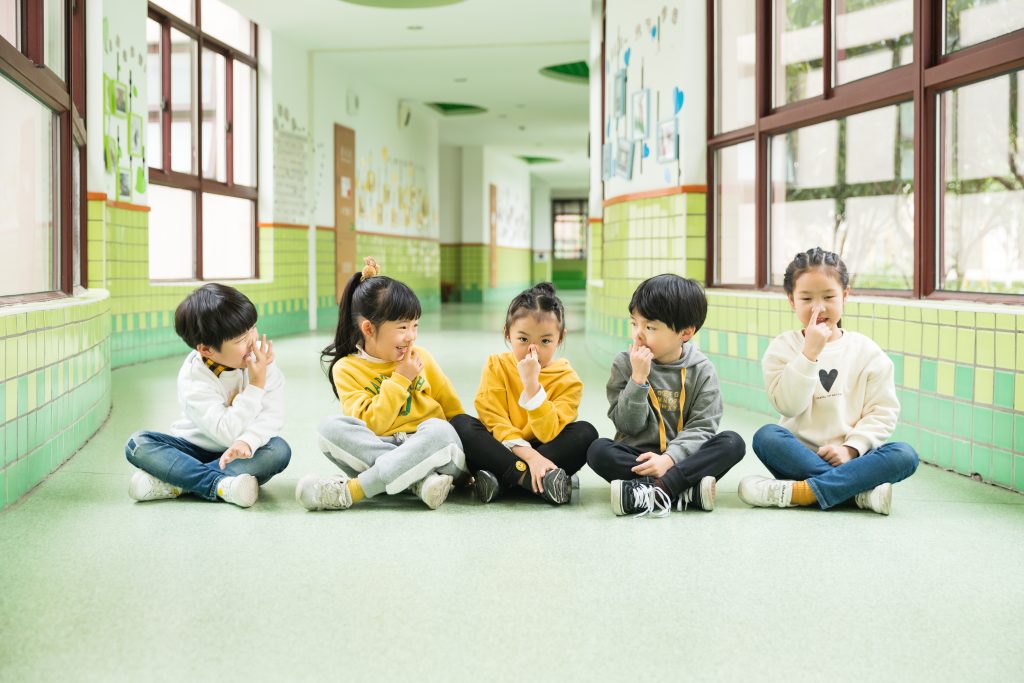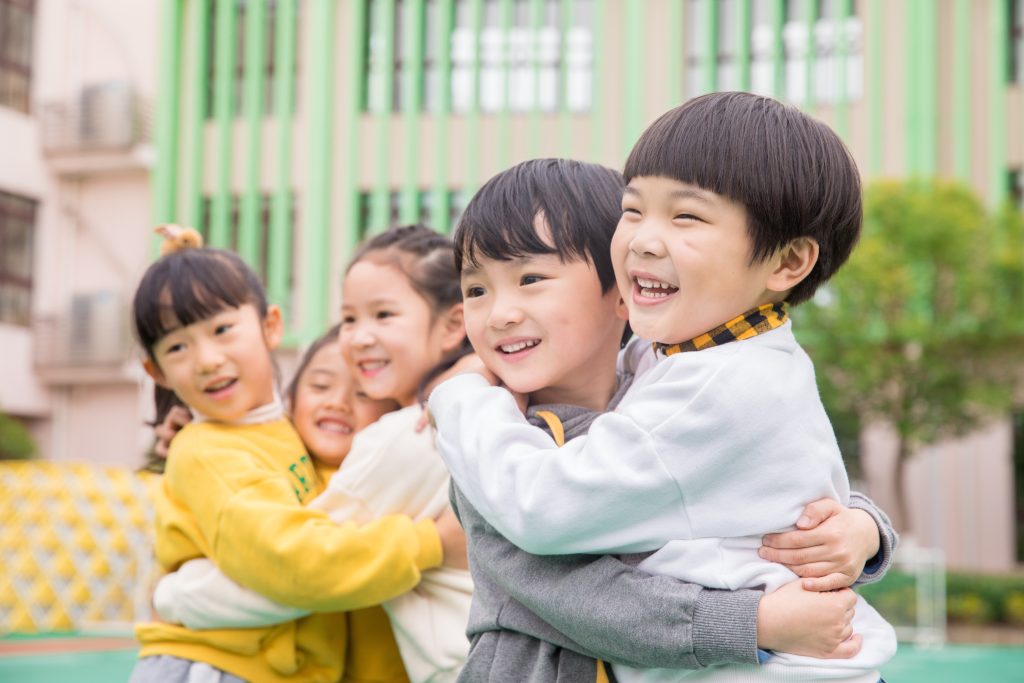Early childhood education has been taken to a different level as the focus is on increasing playtime while incorporating learning skills. Preschool teacher Coral Ng had her hands full with a group of four-year-olds crowding her at the tabletop as she poured the flour into the cookie mixture.
“Teacher, teacher, I want to help!” the excited preschoolers in their pristine aprons cried out. Later, the children had a field day rolling the dough into little balls and watching the cookies being baked in the oven.
In the classroom next door, the three-year-old group were seen drawing the shape of the “S” in the air while singing along to a phonic song.

UCSI Child Development Centre English teacher Denise Cockerill said children of that age usually have a concentration span of around four to five minutes.
“Children will remember the letter sounds better when they sing as they get distracted very easily. Besides, their confidence will be built when they are able to coordinate their movement with the songs,” said Cockerill.
Teaching writing was not given much emphasis in her classes since she said that children as young as two or three may lack the eye-hand coordination and muscle development to attempt writing.
Having taught in Britain previously, Cockerill said the approaches used in teaching young children there are slightly different with more focus being given to play time.
“I try to find a balance with my pupils now because Malaysian parents expect a more scheduled, academic environment in preschools even though the concept of incorporating more play time for children is slowly catching up here,” said Cockerill.
Playing is not all just recreational for children. Flinders University senior lecturer and early childhood education programme coordinator Dr Susan Krieg said children are largely doing literacy work when they play.
“Try to catch a glimpse of the children when they are playing — do you see that they are actually playing out a story?” asked Dr Krieg when delivering her speech titled Early Childhood Educators’ Journey of Professional Development: The Experience of Developed Countries at the National Children’s Conference held recently.
“When children play, they are trying to make a sense of the world around them. So why are we stopping them from playing?” added Dr Krieg who is currently based in South Australia.
She shared that parents from Down Under are not that much different from parents in Malaysia who want to see their children master reading and writing earlier and earlier.
According to her, a step in the right direction is to correct that notion for parents and early childhood educators and to relearn what they know about literacy.
“Language is a symbol system while literacy is reading, writing and everything else in between,” said Dr Krieg.
Taking the scenario of children engaging in a pretend play as an example, she said that play creates a purpose for communicating using symbols such as language and gestures.
“When children are playing, they are using more sophisticated language in trying to make sense with each other. It is different once the adults step in because they will start to put words in the children’s mouth,” said Dr Krieg.
She emphasised that this is where the importance of play comes in since children are using language to make meaning when playing.
Hence, she said it is crucial for early childhood educators to demonstrate the benefits of playing to parents.
“Talk to parents, show it to them that children are learning when playing so that they would not pressure early childhood educators on why they are wasting time letting children play,” said Dr Krieg.
Playing in preschool
As a matter of fact, there is a growing body of research indicating the benefits of play in early childhood education.
A 2007 joint study conducted by British Columbia University, Canada and Rutgers University, New Jersey, United States, showed that preschoolers who were taught for two years using a play-based programme scored better on self-regulation, cognitive flexibility and working memory compared to those who did not.
“Although play is often thought of as frivolous, it may be essential,” said the authors of the study.
In another study done at the lab of the Massachusetts Institute of Technology, it was found that too much of direct, teacher-initiated learning comes at a cost — children are less likely to perform potentially irrelevant actions but also less likely to discover novel information.
The National Preschool Curriculum too advocates allowing children to play in the classroom as it states that playing contributes to the cognitive and motor development in children.
HELP University Education Department head Dr Frances Lee said passive copying tasks and monthly tests have no place in an inquisitive and play-centred preschool classroom.
In her keynote address titled Indications on the Importance of Early Childhood Education at the National Children’s Conference, Dr Lee called attention to the importance of giving play time to children.
However, she noted that certain practices such as teachers giving children play dough to model shapes do not constitute constructive learning activities.
“Play activities need to be integrated into the learning experience of the children.
“Besides, teachers should be with the children when they are playing and the less teacher talk used, the better,” said Dr Lee.
Reflecting on the situation in Malaysia, Dr Lee remarked that the provision of reading and writing skills early still remains the top priority for most parents when it comes to choosing a preschool.
“Preschool operators are likely to face financial difficulties if the children do not pick up reading and writing early because parents will remove them from the centres,” said Dr Lee.

Finding a balance
Early childhood education practitioner Penny Ang agreed that some parents may subscribe to a more traditional approach towards educating young children.
Speaking during the panel discussion at the National Children’s Conference, Ang said it was always a struggle to find the balance between teacher-centred and child-centred learning.
“There are parents who believe that rote learning is the fastest and most effective way for children to acquire knowledge,” said Ang. She did not dismiss that rote learning still had its place in the classroom as it was effective in teaching children about the days of the week and when it involved instructions that had to be repeated periodically.

“There is no one-size-fits-all approach because the children have very diverse learning styles. Early childhood educators need to be reconceptualise the goal of education and reflect on the kind of choices they make in the classroom,” said Ang.
Before planning the lessons, Ang advised early childhood educators to ask these questions — what do they want the children to learn and how do they want the children to learn.
Leaning on Piaget’s theory of knowledge construction, Ang said the early childhood educators’ role is not just to fill in the knowledge gap but to help children to uncover the knowledge.
“Children need to be given the opportunity to play, explore and reflect. It is then that the ‘meaning-making’ process will take place,” said Ang.
Sharing her experiences in her lessons, Ang said she used to read Aesop’s fable The Crow and the Picher to one of her classes.
A couple of months later, the opportunity came up for her to use the story to teach liquid volume when the children were doing worksheets on this topic.
“I was quite taken aback when a few children could not use the concept in the story to answer the questions. It did not seem to register with them,” said AngKnowing that the concept was not fully understood, the persistent teacher brought in two water vessels of the same size to class the next day, filled them to the same level, marked the levels with indicators before putting some marbles in one of the vessels.
“It took some time for some children to grasp the concept but they certainly had fun in the experiments to measure water. It is interesting how educators can play a part to stretch the children’s imagination and get them to construct the knowledge themselves,” said Ang.
“Most importantly, the children are contributing to ideas and they are involved in the decision-making process in order to come up with the conclusion,” she added.
Back to nature
Once upon a time, children used to walk home from school and indulged in games at the field after school hours each day.
Encumbered by the modern city lifestyle, most children these days are more likely to stay indoors tapping their fingers on the latest technology gadgets.
University of South Australia School of Education senior lecturer Dr Sharon Russo said detachment from the environment has caused the children to suffer from nature deficit disorder.
She opined that this will pose a challenge to teachers as children who are disconnected from the nature will have a diminished use of their senses and they are also more prone to having attention disorders.

“In nature, children find freedom and a sense of privacy,” said Dr Russo while presenting on her topic Early Childhood Education Sustainability — An Australian Experience at the National Children’s Conference.
“When the children get in touch with the environment and go on field trips to parks and the museums, they learn about socially responsible actions besides values such as fairness and respect for each other. Aren’t these important to the children’s development as well?” she asked. She said it is not uncommon for preschools in Australia to have vegetable patches as gardening stimulates the senses of the children by bringing them closer to nature.
“Besides, the children take great pride when the vegetables they have grown are served during lunch and snack times. This is also a good way to inculcate healthy eating habits in children,” added Dr Russo.
Meanwhile, other practices carried out in Australian preschools include making toys from recycled materials, teachers dressed up in old clothes and bringing old toys to preschools.
“Children are interested to listen to stories from their teachers on how the way things were when they were children. The teachers also showed the children their old toys and told them about the nostalgia attached to them,” said Dr Russo.
She shared that there was an unanimous ‘no’ when the children were asked whether the old toys should be thrown away as they
are brought up to understand that old items can be reused again and it is all right to play with old toys.” Teaching children about sustainable living is always close to Dr Russo’s heart. “What is the point of bringing up children in an environment that is going to be unsustainable in the future?”
